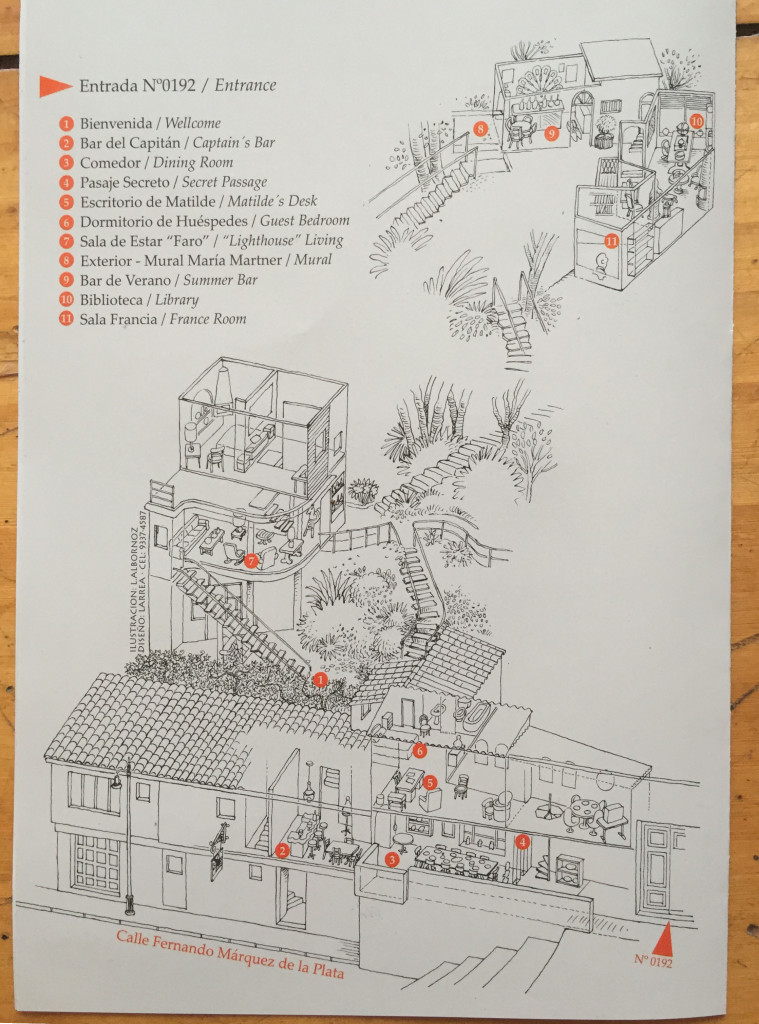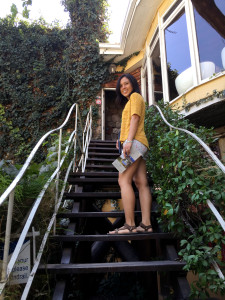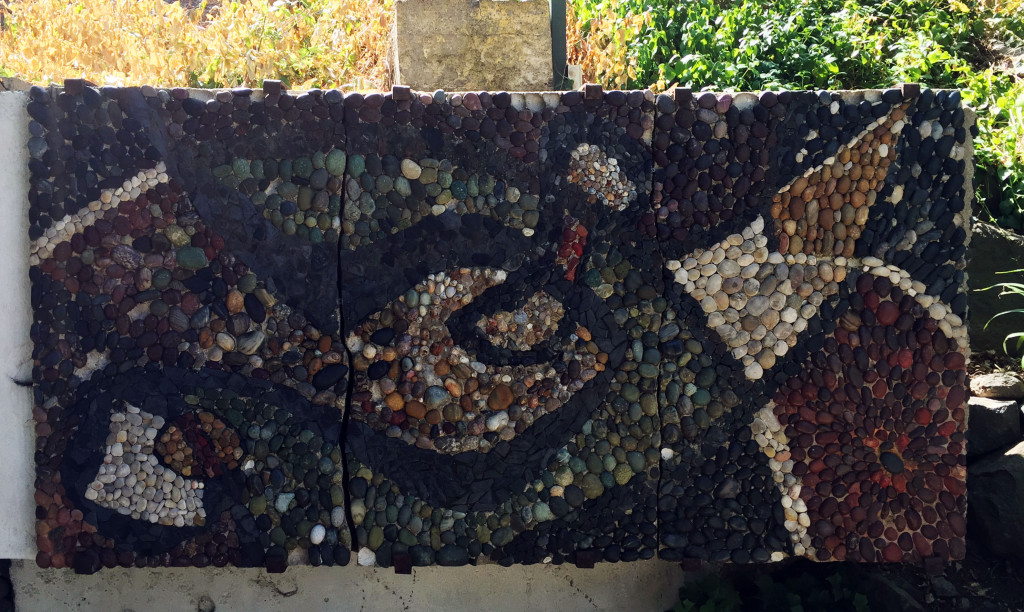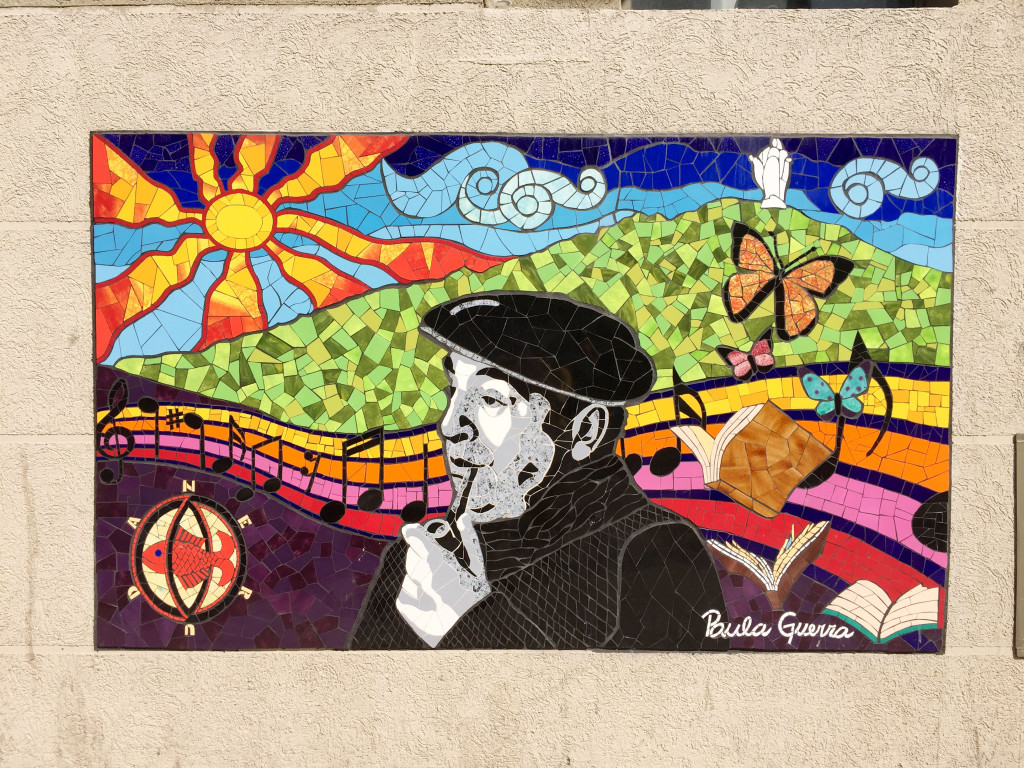Pablo Neruda built his Santiago house as a place he could visit his secret love, Matilde Urrutia, and continue their affair. They built it together, and he named it “La Chascona,” using a quechua word that referred to Matilde’s tangled hair.
After visiting La Sebastiana in Valparaíso, I could not have been more excited to see what wonders and curiosities La Chascona held.
Pablo hired German Rodriguez Arias, an architect from Catalan, to build his house here, but had a hand in almost everything. When he saw the blueprint of the house facing the sun he turned it around so he could instead face the mountains. Rather than find furniture to fit the living room, he knew he wanted certain objects in a room, so he’d design the construction of the room around the objects. Pablo was much more concerned with interior spaces, how things felt rather than how they conformed to contemporary style or looked to others.

Ever since he first touched the ocean and felt the world’s heartbeat, Pablo considered himself a captain of the land. He built La Chascona to be like a ship, long and narrow, with low ceilings (and tiny doors!). When he and Matilde lived there, water ran through the garden area so it really did look, sound, and feel like a ship.

Like in La Sebastiana, pictures were not allowed inside the house, only in the outside spaces. The stairs outside are all different sizes, and are built from different materials. The only thing uniting the stairs is, and was, the plants and nature surrounding them.

The house has not one, but two bars. The first is in a room adjacent to the main dining area and is surrounded by interesting figurines from all over the world, colored glasses from Mexico, and art along the walls. I especially loved the detailed paintings of food. There were several of watermelons—his favorite fruit (“the green whale of the summer,” as he says in his ode to it). One was given to Matilde after his death that depicts a watermelon in a bathtub with a bite taken out in the subtle shape of Neruda’s profile.
The dining table was set with more colored glasses from Mexico and blue and white English place settings, as it was in La Sebastiana. His salt and pepper shakers are labeled “Marijuana” and “Morphine” as a joke to his guests. He specifically chose a narrow table here to keep his friends close together. The design of the chairs recall the sculptures from Easter Island, and both the table and chairs are made of wood was from the trees in the area where he grew up (cypress, I think?). He installed part of a tree trunk in the room too.

The dining room had a secret door that looked like part of the cabinet but actually led to a small room from where Pablo liked to pop out to surprise his guests. He was also said to take this hidden passage and the spiral staircase upstairs to stealthily go for a nap while entertaining.
What a peculiar, yet interesting, guy.
Matilde continued to live there after his death, but chose to sleep in the guest room instead of the bedroom that she and Pablo shared. Her most recent bedroom held art from China, one of Pablo’s favorite places. He’d been there a few times and had even met Mao Zedong (but was not a fan of how violent the revolution there turned out). Matilde and Pablo’s original bedroom was on another floor above the living room and was not open to the public. The security guard said that it had a view of the whole city and the mountains to the left, before it had been built up.
 To get to the living room, you have to exit the bedroom and take another set of stairs up. Like the living room in La Sebastiana, this one also had a hand knocker on it as well as a huge window overlooking the patio (which was flowing water then). Pablo also installed a symbolic window on the western wall that held a painting of the cordillera and ocean, rather than glass, in order to pay homage to his beloved sea. He collected cards (displayed on the underside of the staircase leading up to his and Matilde’s bedroom), stone eggs, music boxes, interesting glass bottles (displayed on a windowsill), statues and figurines from all over the world.
To get to the living room, you have to exit the bedroom and take another set of stairs up. Like the living room in La Sebastiana, this one also had a hand knocker on it as well as a huge window overlooking the patio (which was flowing water then). Pablo also installed a symbolic window on the western wall that held a painting of the cordillera and ocean, rather than glass, in order to pay homage to his beloved sea. He collected cards (displayed on the underside of the staircase leading up to his and Matilde’s bedroom), stone eggs, music boxes, interesting glass bottles (displayed on a windowsill), statues and figurines from all over the world.
The living room displays the famous Diego Rivera painting of Matilde with two heads. One for the seen (her life as a musician) and one for the unseen (her love affair with Pablo). Neruda’s profile is discreetly painted in her red curls. Exiting the living room, we walked through another patio to get to the second bar.

The second, summer bar, originally had only 3 walls, sorta like a covered patio and was used during summer when short sleeves were perfect late into the night. Now it has a window, but through the glass and the glare you can see more fun items Pablo collected. There was an enormous pair of shoes on the floor and a huge wooden fan behind the bar. These were from Pablo’s hometown, and were common in rural areas (where literacy rates were very low) to advertise what stores sold. Pablo was very much about his roots, Chilean and humble.
He also had a series of photographs of authors he admired, who he believed wrote much more interesting things than he did. A few I remember are Walt Whitman (of course), Edgar Allen Poe, and Charles Baudelaire, among others.
From this bar, he often made a “Navigator’s wine” from red wine, cinnamon, and orange slices. The orange slices would float in the wine, thus navigating it like a boat in the sea.
Pablo had two libraries, though the original books from these were given to the University of Santiago (Neruda was a rare book aficionado and collector). In the first, we saw his desk with his glasses, a bronze replica of Matilde’s hand, and items that reminded him of the ocean. One of them has a stamp of a fish inside a circle, which has now become the symbol for the Neruda Foundation.
His awards, including his Nobel Prize for Literature, were also on display here, next to a photo of him and his friend Pablo Picasso (the greats are always friends, aren’t they?). He won many other awards too, including the International Peace Prize and Lenin Peace Prize.
The walls in the second library had more old Dutch navigation maps (showing, again, the “Island of California”), other interesting nautical paintings, and a big bright window behind his reading chair. The floors here were purposefully creaky and wooden, as they would be on a ship. Pablo called this the French Room, because here he liked to read French poetry in its original language, so he would not have to read translations.
Encased in glass is a model of a never-realized fourth house Pablo was planning, named after a condor. In contrast to La Chascona and La Sebastiana, this house was to be flat, with no stairs, and was designed to mimic what it would be like to be a bird.
Pablo died just 12 days after the coup d’etat that overthrew democracy and forced Chile into a dictator’s regime. He was already battling cancer, but hearing about the bombings of the national palace and Salvador Allende’s last speech over the radio did not help his condition. The day of the bombings, La Chascona and La Sebastiana had also been vandalized by supporters of Pinochet with the intention of destroying the properties.
Matilde held Pablo’s wake in the ruins of La Chascona so the press could see the state of Chile, and began a political career herself to restore democracy. She also worked hard to rebuild the vandalized houses to their former glory (a job well done!) and lived out the rest of her life in the house named in her honor, La Chascona.
As Pablo requested, she and Pablo are buried at the house in La Isla Negra, and all three of his homes are now museums, ever entertaining guests, just as he would’ve liked.



Stunning. A living memorial.
Wow what a love story embedded in that beautiful house!